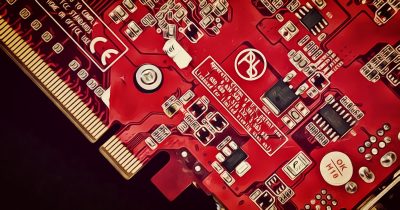AMD Won't Pin Hopes On Crypto Mining Graphics Cards

Share this article
Those shopping for medium to high end consumer or enthusiast-grade computer hardware and graphics cards in the past few months are probably aware of the global supply issues and the resulting hyperinflation of prices.
Graphics cards, typically used for resource-intensive deep learning and gaming applications, have seen as much as a three-fold price increase since November 2017. The twist, however, is that much of the increased demand has been thanks to cryptocurrency mining operations. Manufacturers of hardware have enjoyed significant profits as a consequence, with AMD (Advanced Micro Devices) reporting a 25 percent increase in year-over-year revenue.
Nonetheless, the situation has also presented graphic processor manufacturers and vendors with some challenges. While the entire supply chain benefits from an increase in demand, manufacturers risk losing out on selling to a loyal target audience in exchange for immediate bulk purchases by cryptocurrency miners.
Furthermore, it can be argued current demand for hardware is artificially inflated due to mining farms purchasing tens, if not hundreds, of components at a time, which would not happen in the absence of the flourishing digital currency market.
AMD Faces A Catch-22 Situation
New cryptocurrencies, being fundamentally speculative in nature, are not confidence-inspiring for most computer hardware manufacturing companies – and the same can be said for AMD. In the company’s recent 10-K filing with the Securities and Exchange Commission, AMD concluded that “the cryptocurrency market is unstable and demand could change quickly.”
In addition to that, cryptocurrencies are largely unregulated and operate with little to no government oversight in almost every single major economy. If that were to change in the course of the next few months, particularly if it were to the detriment of the cryptocurrency market, hardware manufacturers could see drastically reduced demand for graphics cards.
AMD acknowledged this fact as well in its document, stating, “China and South Korea have recently instituted restrictions on cryptocurrency trading. If we are unable to manage the risks related to a decrease in the demand for cryptocurrency mining, our GPU business could be materially adversely affected.”
Cryptocurrency miners are lured in by the low ROI (return on investment) periods of graphic cards as compared to ASICs. When Bitcoin crashes significantly and tanks the other cryptocurrencies further still, miners tend to receive a lesser BTC equivalent for their computing power. This is especially true for popular bidding platforms such as Nicehash, where buyers and sellers of hashing power are brought together.
After bitcoin achieved a new all-time high of close to $20,000, its value nosedived until it finally stabilized at $6,000 and began its slow upward climb once again. The crash, however, also affected mining profitability to a significant extent.
Shortage Of Graphics Cards Affecting Other Industries
AMD has come under fire from video gamers who claim that third-party vendors are engaging in price-gouging as demand has soared. According to CNBC, Shrout Research’s Ryan Shrout explained that “With availability consumed by the cryptocurrency mining market, there is little chance for any PC gamer to find a graphics card in stock, let along close to the expected price point.”
Since graphics cards are used to mine altcoins other than bitcoin, a crash may lead to mining losing much of its profitability and appeal. Already, in fact, Nicehash’s own profitability calculator shows a clear downtrend in terms of profit over the past 30 days due to the bear market. For instance, in early February, each AMD Vega 64 would bring in 3.3 mBTC per day, whereas a month later, the same card is only delivering 2.4 mBTC a day – a change that translates into a 27 percent reduction in revenue.
It is interesting to note that this is not the first time that the computer hardware market has been affected due to large scale cryptocurrency mining. In 2012, not long before the Bitcoin network’s difficulty ramped up significantly, AMD and Nvidia graphic cards were both purchased en masse to mine the cryptocurrency.
Ultimately, once it was no longer feasible to use retail, consumer grade hardware to mine BTC, graphic cards formerly used for mining flooded online used markets such as Craigslist. It is perhaps in the manufacturers’ best interests to avoid a similar situation.
Share this article
